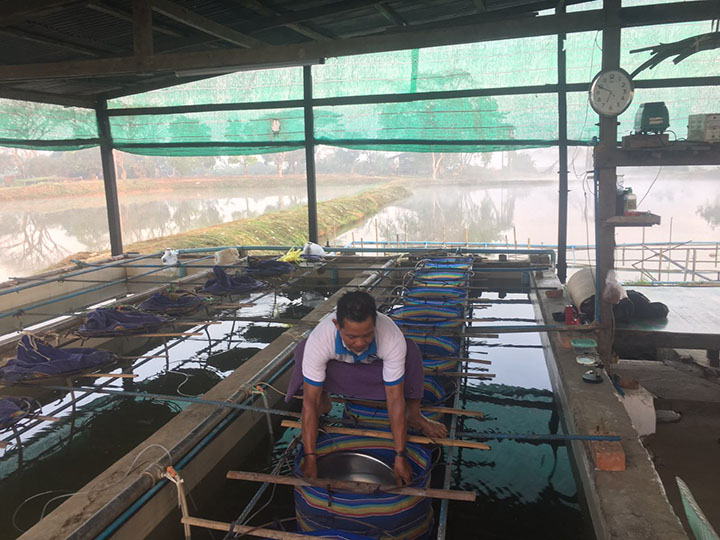12 June
The Hlawga Hatchery under the Yangon Region Fisheries Department, which produces 19 fish varieties for local breeders, is currently carrying out research on breeding Chitala Chitala of Myanmar origin in order to meet market demand.
“The fish breeding season has started. More fish larvae will be produced by the end of June. Only the striped catfish reproduce in August. Research is being carried out on Chitala Chitala of Myanmar origin so it can be distributed to fish breeders. Now, the fish is at the spawning stage. We are collecting three-year-old fish and making efforts to breed them through induced spawning. Chitala Chitala of Myanmar origin is fetching K8,000 per viss (equivalent to 1.6 kg), and is, therefore, a lucrative species for breeders,” said U Ye Tun Naing, the Assistant Director of the Hlawga hatchery.
The Hlawga Hatchery is producing 19 species of fish, including marketable carp, striped catfish, barb, climbing perch, catla, and mrigal, in order to distribute them to fish farmers. Chitala Chitala does not require a separate pond and can be used in mixed farming with rohu and carp, thereby making an attractive prospect for fish farmers.
“The Hlawga Hatchery is conducting research on egg volume produced by a female Chitala Chitala, larval size, growth, and development rate. A white carp can hatch 80,000 eggs, while a striped catfish produces 120,000 eggs. Research on Chitala Chitala breeding is underway. To improve Myanmar’s fisheries sector, the rainy season has been set as a no-fishing period as it is the breeding season for fish,” according to the Fisheries Department.
If the reproduction of Myanmar origin Chitala Chitala is successful, it will help pave the way to external markets and earning foreign income, and improve the livelihood and socio-economic conditions of fish farmers.
The Hlawga Hatchery has been distributing fish to the region and states, except Chin State, eastern Shan State, and upper Sagaing Region. Fish are primarily farmed in Mandalay, Ayeyawady, and Bago regions.
Myanmar stepped into the hatchery business in 1958 with wild-caught fish. However, the lack of artificial breeding techniques forced fish breeders to import fish. In 1962, Myanmar livestock breeders, with the help of Indian experts, launched a hatchery in Hlawga and achieved good results. The Hlawga Hatchery is the largest in Myanmar.
The Yangon Region Fisheries Department offers intensive fish farming courses, cover ing artificial breeding, maintaining fish origin, nursing fingerlings or larvae, quality control of water, and fish diseases and treatment at the Hlawga Hatchery.
Around 30 hatcheries are operating under the Myanmar Fisheries Department. To enhance the livestock sector, the Fisheries Department is conducting educational courses and raising awareness about illegal fish farming and the conserration of endangered fish species, as well as making efforts to add fish back to rivers, creeks, dams, and reservoirs, and collecting fishery data, with the help of international organizations. —Than Htike
(Translated by Ei Myat Mon)



